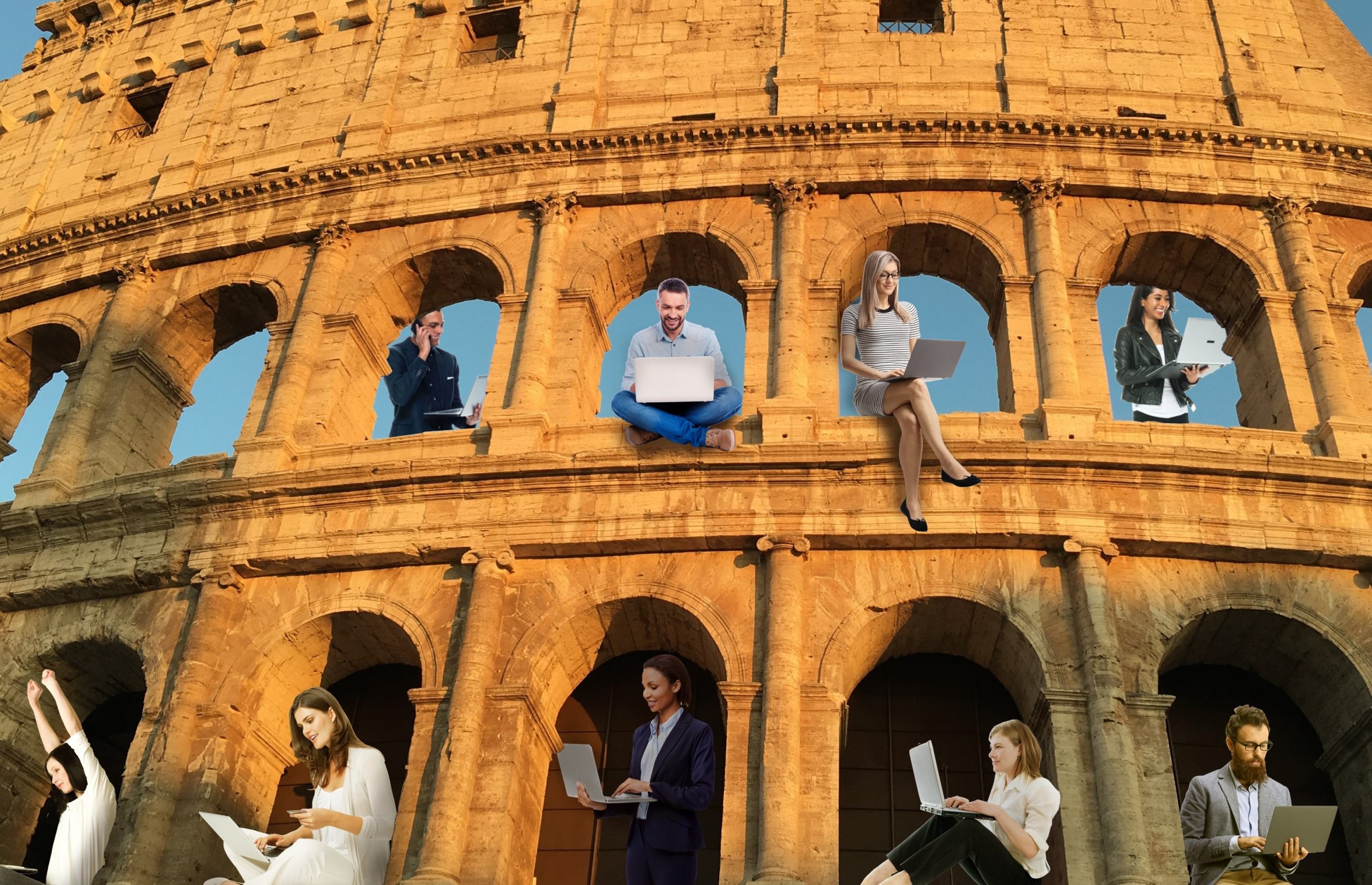With remote work seemingly here to stay, vacation days have entered a nebulous zone and become ever harder to track, while traveling has dropped into the most ambiguous space of all. Does remote work mean a mandate to stay in town, in the state—or can it include hauling your laptop to the Piazza Navona? How remote can remote work be?
Enter blended travel, aka “workations.” Crowne Plaza Hotels & Resorts, part of IHG Hotels & Resorts, commissioned a survey to measure the appeal of very remote work, polling more than 1,200 people. The result was eye-opening: 65% of millennials (25 to 44 years old) and 59% of Generation Z (18 to 24 years old) respondents were more likely to sign up with a company that offers “frequent travel or flexible (work + leisure) blended travel possibilities as a perk,” according to the analysis.
Other findings:
• 31% believe that combining work travel and leisure would allow them to progress further in their careers.
• 35% believe that it would be beneficial to them, and allow them greater flexibility, to combine work with a leisure trip abroad.
• 39% said that it would increase their happiness levels.
• 80% of business executives worry that, unless they increase business travel, their professional and personal lives would suffer.
“Every single one of my clients is struggling with talent acquisition,” says Palm Beach-based Rita Barreto, a veteran human resources pro who consults about workplace issues as president of Top Tier Leadership. “With 11 million openings in the United States, companies are looking for ways to attract and retain talent. The notion of work-life balance has proven to be nothing more than a term. At best, a small percentage of employees made it a reality due to the culture of the organization.”
Barreto says that to be a talent magnet today, you have to offer life-work integration: “It’s recognizing and appreciating the 24-7 life of an employee and the need for time to reboot and enjoy a full life. It requires flexibility, trust and accountability.”
Josh Leibowitz, the Miami-based president of Seabourn Cruise Line, has come around to the benefits of blended travel time. It wasn’t always so. A few years ago, he gave a TEDx talk in which he advocated a strict separation of vacation time and work time, precisely measured week to week.
“I spoke of the importance of vacation time to relax, recharge and have ongoing energy to engage,” he says. “My thinking on this has changed. I still believe there are times when we should go into as much of a non-work time-period as possible; however, I also recognize that for many of us, disengaging for more than a few days at a time is not only not feasible, but it can also increase the stress load of reengaging on return. So, my new philosophy is to find pockets of blackout on holiday. That may mean a few hours where you put phones down or maybe a few days,” but he says that it’s time to accept permeability between leisure and work when we travel.
Leibowitz points to what many Europhile executives have taken advantage of throughout their careers: the all-important time difference that allows you to savor some personal time in the early part of the day. “When someone travels to Europe from the U.S., they benefit from the six to nine hours when U.S. workers are still sleeping to have true vacation time. Once the offices open, they should set aside one to two hours of focused work time to catch up on email and to engage with colleagues,” he says. It takes considerable discipline: “The key,” Leibowitz says, “is that when the office is closed, people should avoid the habit of checking in too much during their vacation to ensure they get the proper balance.”
Leibowitz agrees with Barreto that the tone is set from the top. “Vacation time is a core part of the Seabourn culture,” he says. “One of the perks of working at Seabourn is the ability to a vacation on a Seabourn ship, and we provide deep discounts to our employees to be able to experience the highest form of luxury travel. While onboard, we demand that they not only take time off, but also experience the Seabourn product as consumers. If all they do, when they board the ship, is work on video calls back in the office, they won’t benefit from experiencing Seabourn and coming up with ideas and ways to make it even better—if that’s possible.”
And when travelers—whether they work for the cruise line, or not—need to touch base with the home office or with clients, Seabourn provides no-stress contact. “We invested millions of dollars to enable reliable, high-speed internet as part of the Seabourn experience, even when guests are hundreds or thousands of miles from shore,” Leibowitz says. “This is in response to guests who want to or need to be able to stay in touch with work or family. We have some guests that sail with us on our 145-day world cruise and treat Seabourn not only as a second home, but also a second office.”
But what happens when unplugging is part of the allure of the product? For example, the line’s newest ship, the Seabourn Venture, travels to Antarctica, the Arctic and the Amazon with two submarines onboard and a team of expedition guides—a ratio of one guide for every 10 guests. “Those trips require people to take 10 to 12 days of time out of the office to truly enjoy,” Leibowitz says. “There is nothing as mind-expanding as time exploring nature’s most remote areas of the world, so we need to make time for it.”
Still, he says, some executives tell him that they are too busy to be untethered for that long, “so we amped up the wifi to allow them to balance work and play.”
Colosseum photo by Drew Limsky














